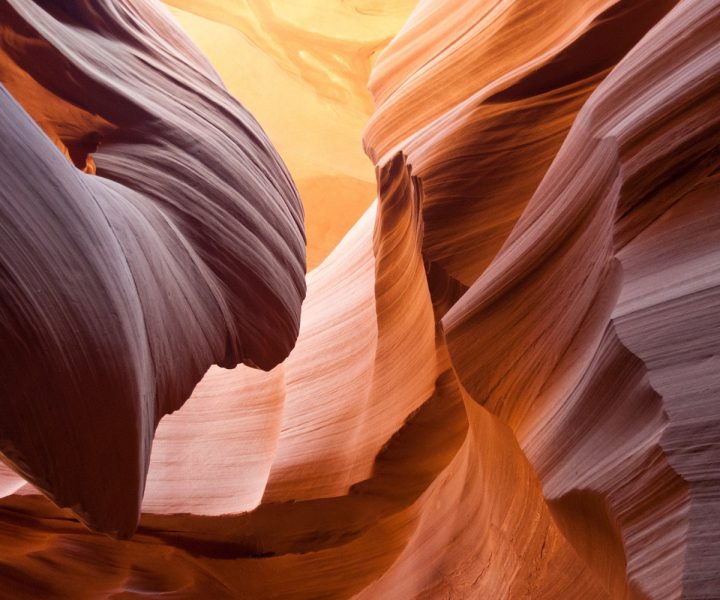
Regularly featured on almost all “X Places You Need To See Before You Die” lists, Antelope Canyon is a stunning place. Antelope Canyon lies just outside Page, Arizona, partially in the Navajo Nation. If you are planning to visit Antelope Canyon (which we can’t recommend enough), we’ve put together a list of things you should know before heading out.
Permits and Entry Fees
Antelope Canyon is divided into two distinct canyons–Upper Antelope and Lower Antelope. The most popular and most visited is Upper Antelope, but both are very worth your while.
You cannot go into Antelope Canyon without a tour guide, which will cost you around $35 – $40 for Upper Canyon, and around $20 for Lower Canyon. Photographs are an additional charge, and an additional fee of around $6 is required if you’re going to enter the Navajo Nation.
Upper Antelope or Lower Antelope?
Upper Antelope is more populated with tourists, is more expensive and has wider walkways. On the contrary, Lower Antelope has a lot fewer tourists, is a lot cheaper, the tour lasts for longer, but the canyon spaces are much narrower. All of those things have their upsides and downsides, depending on your personal preference, so it’s really up to you. In our opinion, the main difference is the shafts of light beams. While you can find these shafts in both canyons, the light beams in Upper Antelope are certainly more dramatic and will make for more stunning photographs.
If you are looking for a more adventurous outing and are not as concerned with photographs, go for Lower Antelope. You won’t have to deal with scores of tourists, and you may be able to do a bit of climbing.
Light beams
The light streaming through to the canyon floor is what makes this place so magical. The most glorious beams of light happen during certain times of day, so plan your visit around when you can best see the light beams. The time differs depending on the time of year, so talk to tour guides beforehand, as they will have the most up to date information.
Be careful–it’s really dark down there
The canyons (especially Upper Antelope) can get dark during the daytime, so make sure to stick with your tour guide and don’t go running off and risk getting knocked to the ground by a jutting piece of the canyon. If you can’t see, use your hands to get around.
Watch the weather
If you are heading off to Lower Antelope, you need to be very careful when it comes to flash floods, especially if you are exploring by yourself. Double check the weather before heading out and take heed of all precautions and warning signs.
 Your Privacy Choices
Your Privacy Choices
 The
The